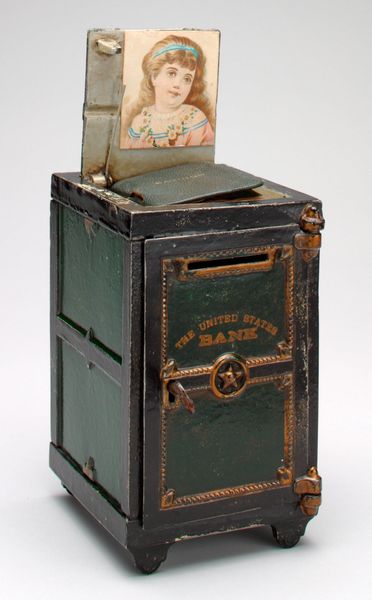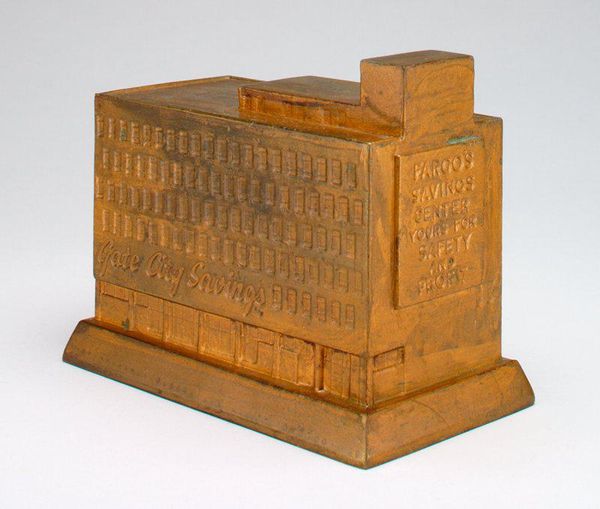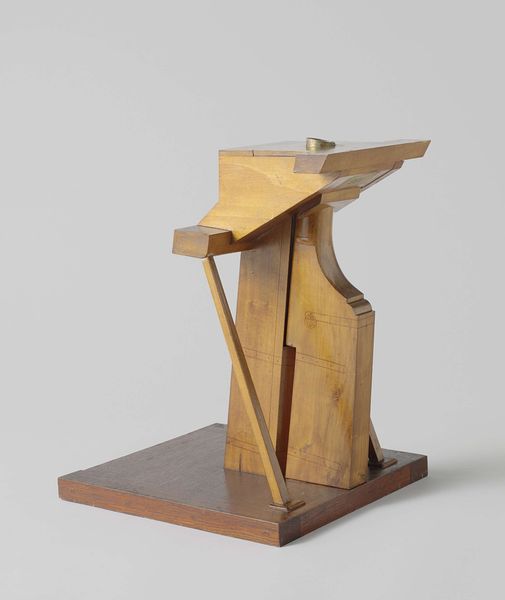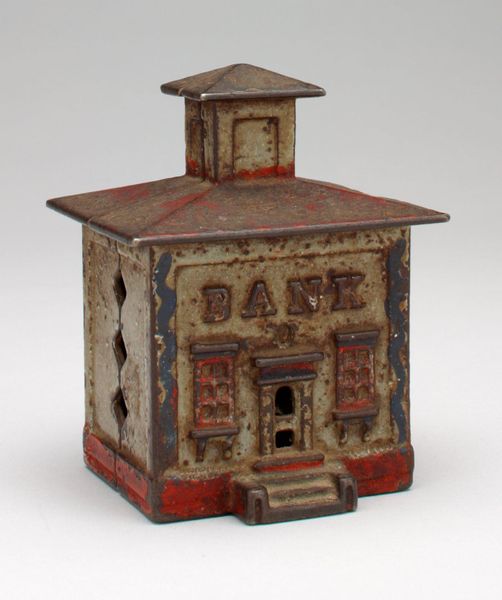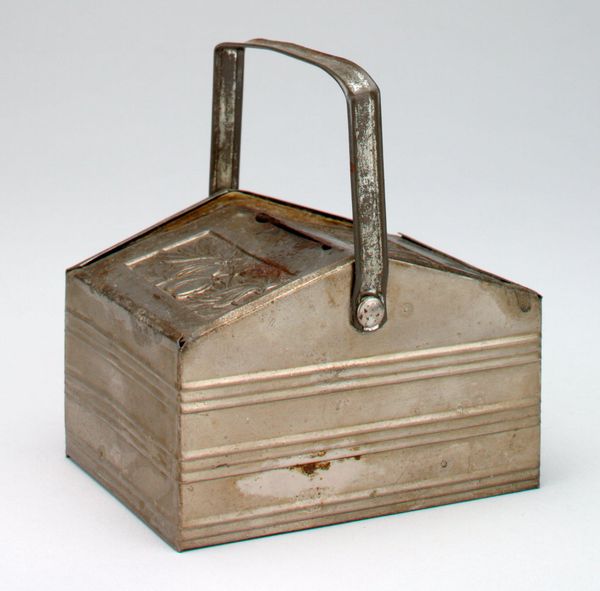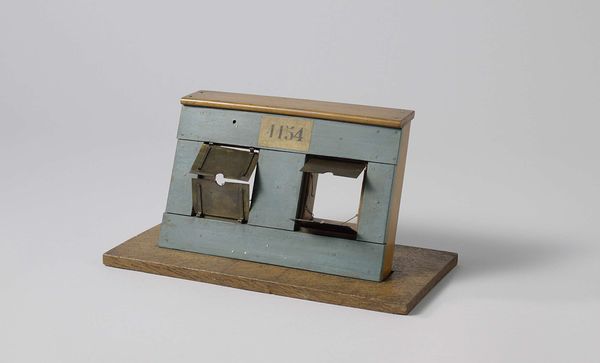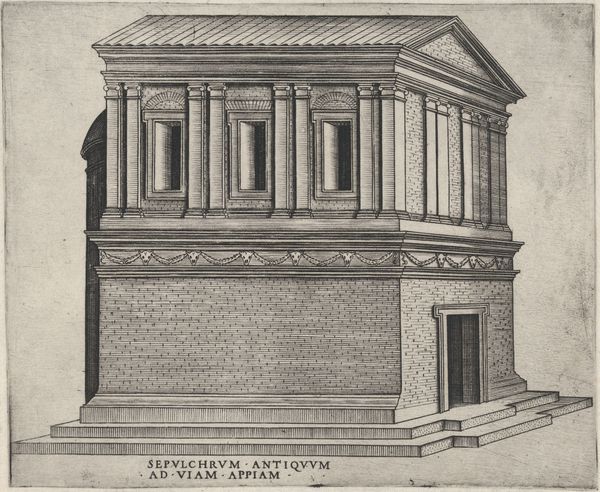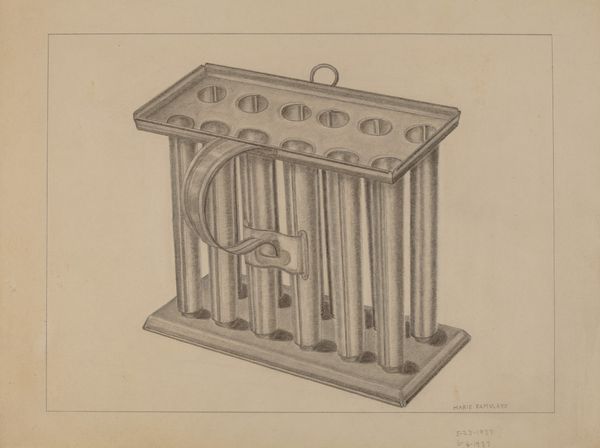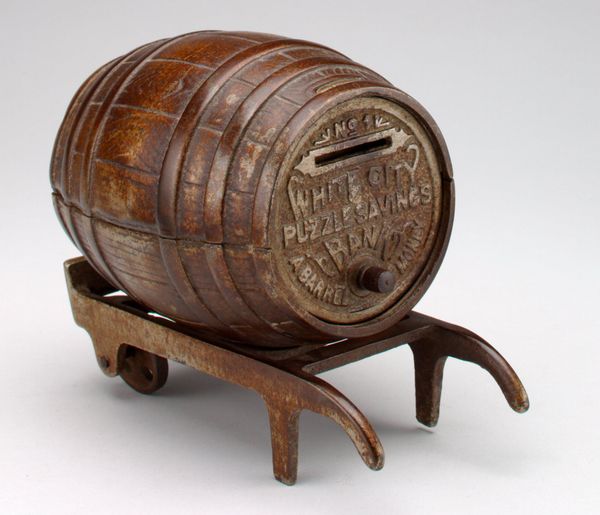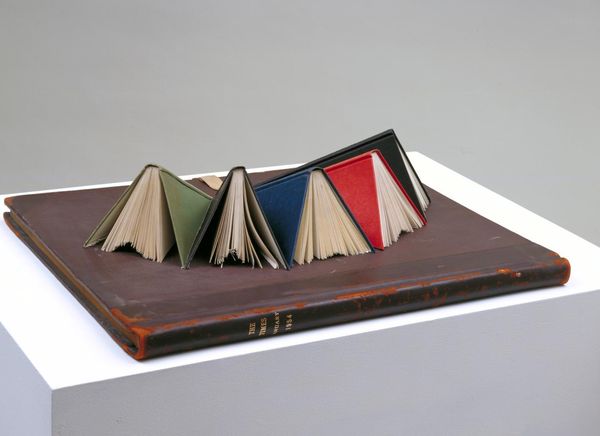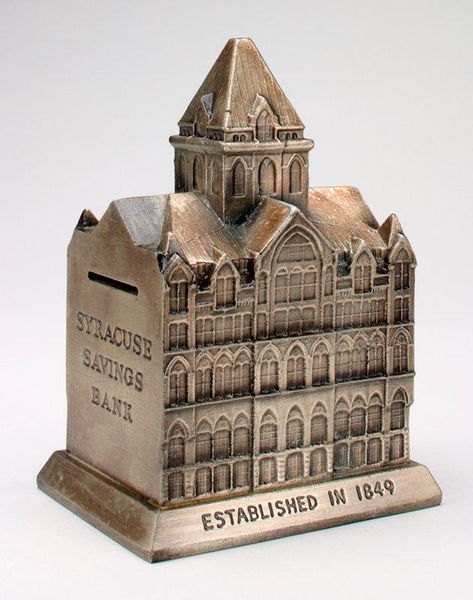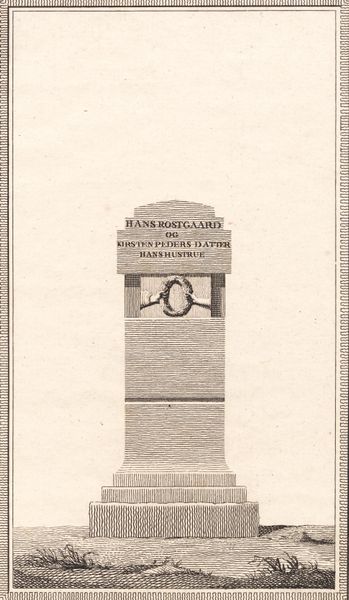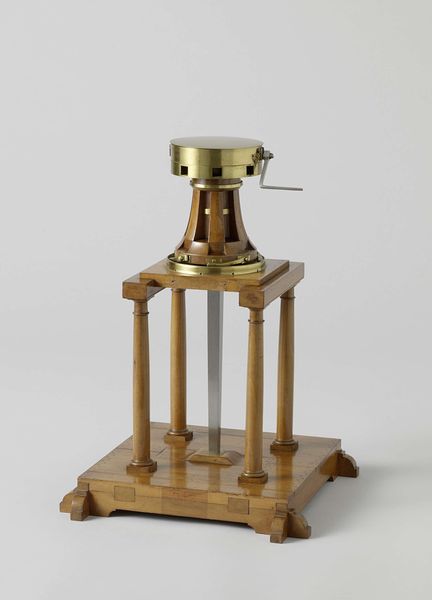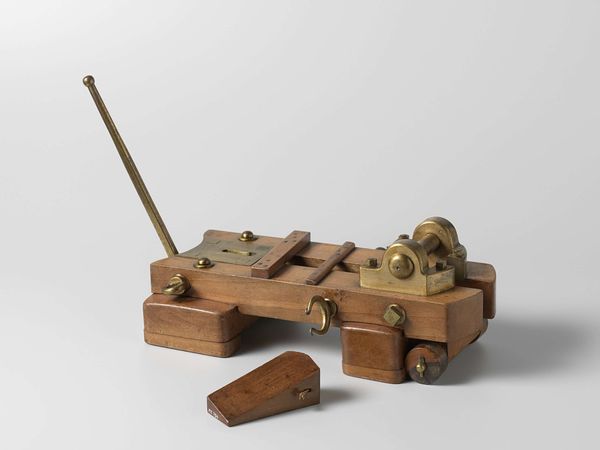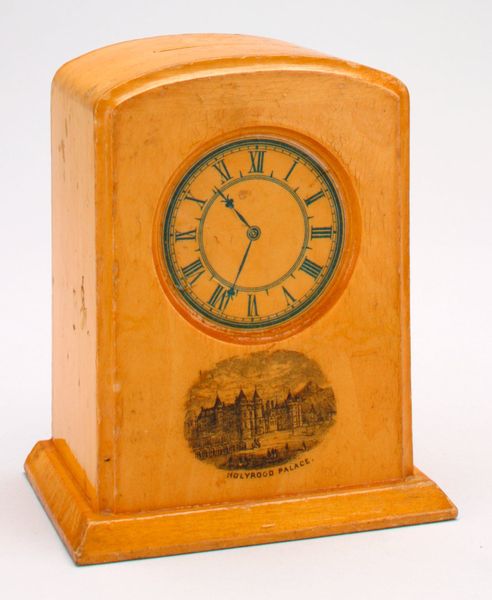
-Bank of Education and Economy- mechanical bank c. 1895
0:00
0:00
mixed-media, assemblage, metal, found-object, sculpture
#
mixed-media
#
assemblage
#
metal
#
sculpture
#
found-object
#
sculptural image
#
sculpture
#
united-states
#
decorative-art
Dimensions: 4 5/8 x 3 1/16 x 3 1/16 in. (11.75 x 7.78 x 7.78 cm)
Copyright: Public Domain
Editor: Here we have a mechanical bank dating back to around 1895, titled "-Bank of Education and Economy-". It's made of mixed metals and other materials, truly an assemblage. I’m struck by how this simple object connects personal finance with grander societal aspirations. What do you see in this piece? Curator: This "Bank of Education and Economy" speaks volumes about the era’s societal values and manufacturing processes. The materiality is central: consider the specific metals used, likely mass-produced to reach a broad audience. How does the choice of these base materials influence its perceived value versus, say, a bank made of precious metals? It links the everyday person’s economic agency with decorative art. The very act of depositing money becomes a mechanical, almost ritualistic process. Editor: It’s interesting how it almost elevates a mundane task through the mechanics of it all. What do you think it says about the link between education and the economy back then, as suggested in the name? Curator: The inscription points to a crucial ideology: education as an economic investment. This little bank normalizes the pursuit of knowledge as a pathway to economic success. Now, let's examine the object's patina. Is this natural aging or intentional design? Such weathering impacts our understanding and the artifact's significance. It is clearly manufactured on a broad scale to meet high consumption patterns that encourage productivity. Editor: I hadn't considered the effect of its weathered look. It’s really interesting to consider the manufacturing process as a form of cultural commentary! Curator: Precisely! By interrogating its materiality, labor involved in creation and production of commodity culture, and intended audience, we expose a rich tableau of socio-economic beliefs at the turn of the century. It reframes "high" art appreciation, focusing on how our lived spaces became reflections of cultural ideology.
Comments
No comments
Be the first to comment and join the conversation on the ultimate creative platform.
